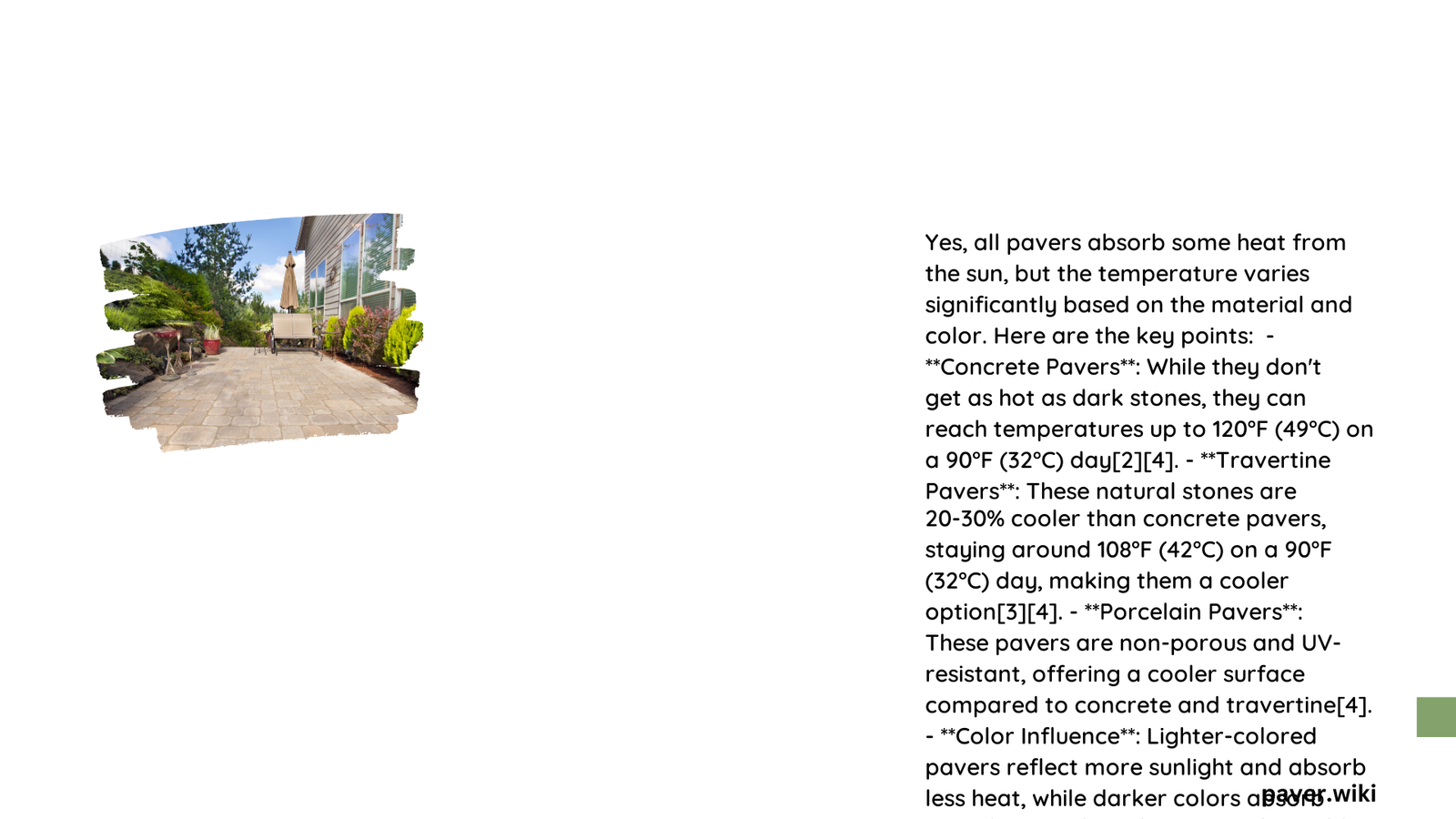Pavers can become extremely hot under direct sunlight, with surface temperatures potentially reaching 50-70°C (122-158°F), making walking barefoot uncomfortable and potentially causing skin burns. The heat absorption depends on material type, color, and sun exposure, with concrete and dark-colored pavers heating up most dramatically compared to lighter, more porous materials like travertine.
What Determines Paver Surface Temperature?
How Do Different Paver Materials Absorb Heat?
Paver materials have unique heat absorption characteristics:
| Material | Heat Absorption | Surface Temperature Increase |
|---|---|---|
| Concrete | High | 20-40°C above ambient |
| Brick | High | 20-40°C above ambient |
| Travertine | Low | 10-20°C above ambient |
| Granite | Moderate | 15-25°C above ambient |
Factors Influencing Paver Heat
- Material Composition
- Concrete: High thermal mass
- Natural stone: Variable heat retention
-
Porcelain: Lower heat conductivity
-
Color Impact
- Dark colors absorb more heat
- Light colors reflect solar radiation
- Color can increase surface temperature by 20-40°F
What Makes Some Pavers Cooler?
Several characteristics contribute to lower surface temperatures:
- Porosity: More porous materials dissipate heat faster
- Color: Lighter shades reflect more sunlight
- Texture: Rough surfaces can help disperse heat
- Material Density: Lower density materials heat up slower
How Can You Reduce Paver Surface Temperature?
Practical strategies to manage paver heat include:
- Choose light-colored materials
- Select naturally cooler stones like travertine
- Install shade structures
- Use outdoor rugs or mats
- Consider water features nearby
When Are Pavers Most Likely to Be Hot?
Peak heat conditions occur during:
– Midday hours (10 AM – 4 PM)
– Summer months
– Direct, unobstructed sunlight
– Areas with minimal vegetation
Expert Recommendations for Cool Walking Surfaces

Top Recommended Cool Paver Materials
- Travertine
- Naturally cooler
- Porous structure
-
Reflects more sunlight
-
Light Granite
- Heat-resistant
- Low heat absorption
-
Durable surface
-
Light-Colored Porcelain
- Low thermal conductivity
- Resistant to extreme temperatures
- Easy maintenance
Safety Precautions
- Test surface temperature before walking barefoot
- Use protective footwear
- Install temporary shade
- Consider cooling techniques like light-colored sealants
Conclusion
Understanding paver heat characteristics helps homeowners and designers create comfortable outdoor spaces. By selecting appropriate materials and implementing strategic design choices, you can significantly reduce surface temperatures and enhance walking comfort.
Temperature Safety Guide
| Surface Temperature | Walking Comfort | Risk Level |
|---|---|---|
| Below 35°C | Comfortable | Low |
| 35-50°C | Uncomfortable | Moderate |
| Above 50°C | Painful | High |
Pro Tip: Always test surface temperature with the back of your hand before walking barefoot.
